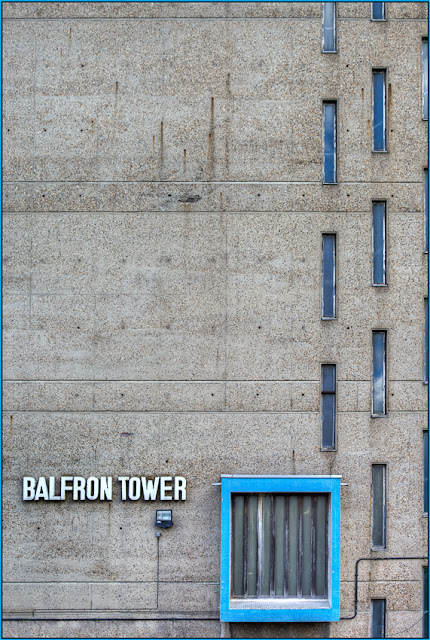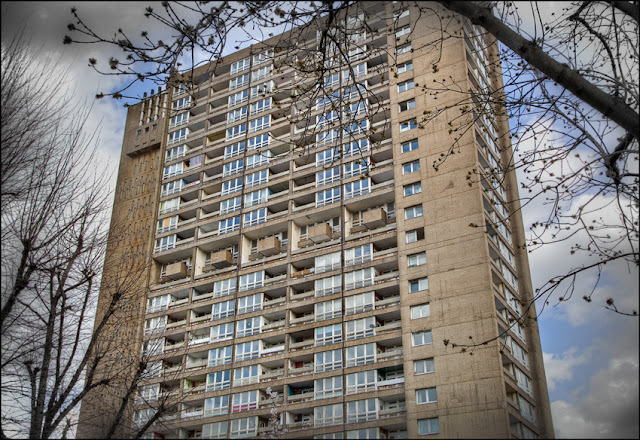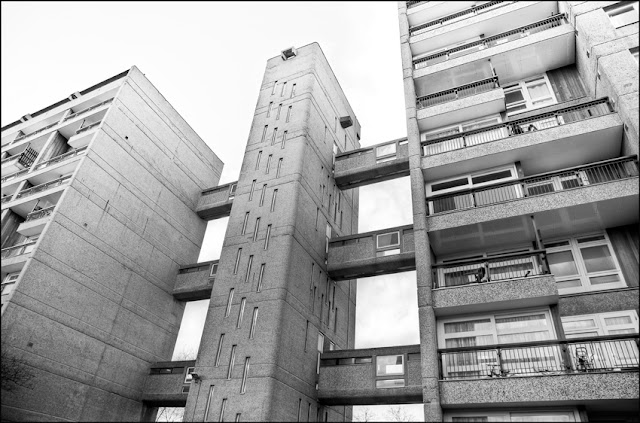Balfron Tower, Carradale House and Glenkerry House
Balfron Tower
Balfron Tower is
a 26-storey residential building in Poplar, Tower Hamlets, East London. Built
in a Brutalist style, it forms part of the Brownfield Estate, an area of social
housing between Chrisp Street Market and the A12 northern approach to the
Blackwall Tunnel. It was designed by Ernő Goldfinger in 1963 for the London
County Council, built 1965–67 by the GLC, and has been a Grade II* listed
building since 1996. Balfron Tower is stylistically similar to Goldfinger's
later Trellick Tower in London.
Carradale House
(1967–70) is an adjacent, unique, modernist building, also designed by Ernő
Goldfinger and Grade II listed. The two buildings appear to be natural
extensions of each other, linked by style and design, with the long, low form
of Carradale House complementing the height of Balfron Tower. All flats have
dual window aspect and large south facing balconies, allowing plenty of natural
light, and decorated with natural wood panels on the sides.
Goldfinger's
studio later added Glenkerry House on the same estate, complementing Balfron
Tower and Carradale in style.
The building was
given Grade II listed status in March 1996, followed by Carradale House in 2000
to spare them from demolition. Carradale and Glenkerry Houses were also
included in the Balfron Tower Conservation Area, designated in 1998. The
listing continues to attract comment, especially in view of the failure of
another nearby Brutalist estate, Robin Hood Gardens, to obtain the same
protection.
"Like most great writers, Ian Fleming took inspiration for his fictional characters from real life. He came upon the name James Bond from reading a book on ornithology by a man of that name. He thought the monosyllabic name relayed a strength and directness that was ideal for the type of spy he wanted to portray. As far as we know, the twitcher version of James Bond never took umbrage at being turned into a fearless, alcoholic, womanising, psychopathic fictional character (what reasonable man would?)."
"It’s commonly accepted that Fleming got the idea for the name Goldfinger when he first heard it mentioned whilst chatting over a round of golf with John Blackwell, a cousin of Erno Goldfinger’s wife, Ursula. The exceptionally tall Erno Goldfinger was by all accounts a humourless man. A Marxist, born into a Jewish family in Hungary who took British nationality. The fictional villain, Auric Goldfinger was a short, Jewish Soviet agent. He was also a foreigner who became a naturalised Brit and, like his architect namesake, lacked people skills. "
"According to The Man with the Golden Typewriter, a compilation of Ian Fleming’s letters that has just been published, Erno let it be known that he thought his name was being brought into disrepute by being chosen as that of a Bond arch-villain."
"In a letter from Jamaica, Fleming told his publisher not to “stand for any nonsense from the Golden-Finger” as there were many others of the Goldfinger name in US and German telephone directories. In the same letter he suggests inserting an erratum slip to change the name throughout to Goldprick. As we now know, despite being perhaps the greatest lost Shirley Bassey hit, Goldprick didn’t make publication and was confined to an angry letter exchange."


































Another great post that needed a repost. Loved reading the little tidbit about Ian and Goldprick.
ReplyDeleteYou'd love to hear Shirley Bassey singing it, wouldn't you?
DeleteYou know I would. Thank you Gethin. 😁
Deleteextremely interesting design and construction
ReplyDeleteAlso, unusually popular and sought after by the inhabitants, unlike a lot of sixties high rise.
Delete